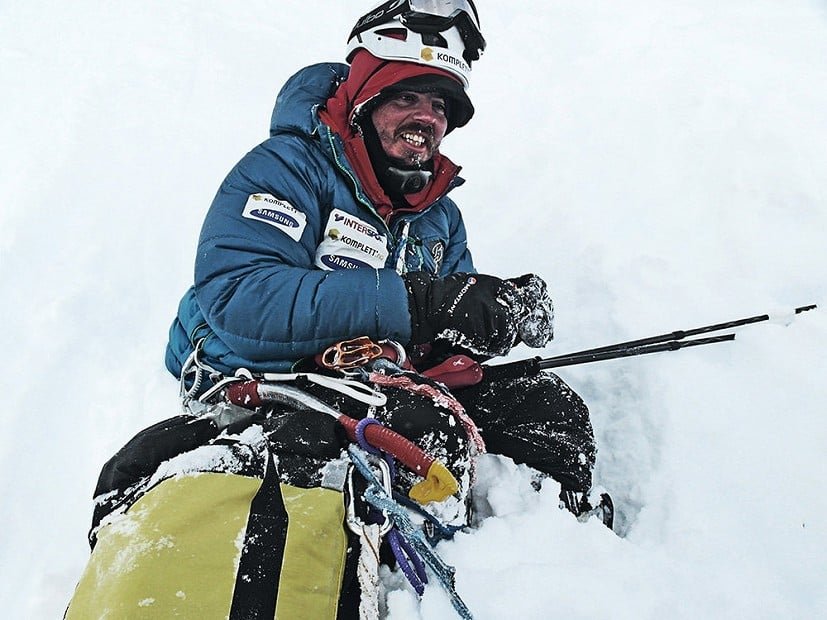“Getting the shot” - photo tips from Andy Kirkpatrick
This is from a blog post written by British climbing expert Andy Kirkpatrick, shared with permission. Connect with Andy on Instagram @psychovertical and his website.
Andy enjoying a lovely afternoon in Antarctica. Credit, Andy Kirkpatrick collection.
I’ve always considered myself as a pretty average photographer, who just happens to find himself and his camera in un-average places. That was until last year when I gave a slideshow at the Gigon film festival in Northern Spain. The talk went well, and afterwards the organiser came up and told me my climbing photos where the best he’d ever seen. Knowing that Heinz Zak had done a slideshow the year before, I asked if his weren’t better. “No” he said, “he is only a photographer . . . you are an artist!”
Well, I’m not sold on the idea, but lots of people email asking about photography, so here’s a simple list of thoughts and ideas that might help those who aspire to be more than just a photographer!
Take a camera - Yes it may sound obvious, but many people don’t take a camera. In my opinion there is always something to shoot, and leaving your camera at home will guarantee you miss some amazing shot . . . like Concorde crashing into the Orion Face or something.
Don't get hung up with technology (don't be a camera nerd) - There are those who take photos and there are those who talk about them. What you shoot is far more important than what you shoot it with, be it a mobile phone, disposable camera or a homemade pinhole job. The image gives the photo life, not it’s DPI, and in my experience it’s out of focus, thumb obscured shots that people remember. Real life isn’t 300 dpi, it’s also not in focus . . . well, not if it’s any good.
Have your camera where you can use it - It’s no good having your camera in your rucksack lid. Get a camera pouch, hang it around your neck, stick it in a pocket.
Take photos when you least want to - The best climbing shots are similar to good war photography. They are real and are dangerous to catch. Mid-pitch, mid storm, mental breakdown, they show a climber and climbers at their most vulnerable.
Catch people off guard - I hate the shots in mags where the climber knows they are being shot. What you see isn’t the real climber, it’s what the climber wants you to see. A good example are the images from Steve House ‘s ascent of Nanga Parbat. Basically you need to shoot people when they are at their most pissed off, scared or vulnerable. So no saying cheese.
Take lots of shots - Try and photograph each part of the climb, everything from getting out of the car to getting back to the car. Imagine you have to make a slideshow out of the climb.
Take portraits - A good portrait of a knackered friend or climbing partner will tell far more than a shot of a crag. Take shots both in portrait and landscape, placing the head and shoulder to either end of the frame.
Don't forget details - What is it that you remember about a climb? Is it the big things or the small? Why not capture both? Take shots of frozen krabs, your partners crampon points, helmet stickers, you name it.
Act up for the camera - Humour is what keeps most climbers sane, so make sure you capture it. Crazy faces, stupid visual gags, naked men with sheep. These shots are gold dust!
Look at other photographers images - One of the best places to check out great candid shots is the Patagonia catalogue. Find photographers you like and get ideas from their shots. Look beyond climbing by looking in photo books by documentary photographers.
Keep it real - Don’t let magazines skew your view of good climbing photography. Do what you do, and show it to who wants to see it.


